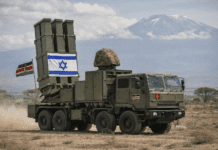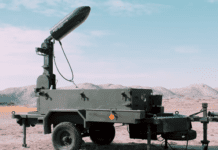This post is also available in:
 עברית (Hebrew)
עברית (Hebrew)
Researchers are looking for a 3D sensor that is compact and easy to use for applications in autonomous vehicles, robots and drones, security systems and more. LiDAR (Light detection and ranging) sensor systems can act as 3D sensors, in practice, though, the complex moving parts in many of these systems can make them bulky, unreliable and expensive, limiting their utility.
LiDAR sensors can map the distance between distant objects and more using laser light. In modern LiDAR sensors, many of the systems are composed of a laser source; a photodetector, which converts light into current; and an optical beam steering device, which directs the light into the proper location.
There’s a lot of interest in non-mechanical or solid-state devices. One non-mechanical option that has gained traction is optical phased arrays (OPAs) — ranks of tiny optical antennas manufactured to steer light in different direction. But as very large numbers of optical antennas begin to be integrated into a single chip, controlling and calibrating the OPAs becomes complex, according to osa-opn.org.
A team of researchers from Yokohama National University in Japan believes they have developed a method to obtain such a sensor by taking advantage of slow light, an unexpected move in a field where speed is often valued above other variables. It appears that quicker is not always better, especially when it comes to a 3D sensor in advanced technology.
“Currently existing optical beam steering devices all use some kind of mechanics, such as rotary mirrors,” said Toshihiko Baba, paper author and professor in the Department of Electrical and Computer Engineering at Yokohama National University. “This makes the device large and heavy, with limited overall speed and a high cost. It all becomes unstable, particularly in mobile devices, hampering the wide range of applications.”
In their slow light study, Baba and his team used a special waveguide “photonic crystal,” aimed through a silicon-etched medium. Light is slowed down and emitted to the free space when forced to interact with the photonic crystal. The researchers engaged a prism lens to then direct the beam in the desired direction.
“The non-mechanical steering is thought to be crucial for LiDAR sensors,” Baba said.
The resulting method and device are small-sized, free of moving mechanics, setting the stage for a solid-state LiDAR. Such a device is considered smaller, cheaper to make and more resilient, especially in mobile applications such as autonomous vehicles.
In the next stage, the team will more fully demonstrate the potential of a solid-state LiDAR, as well as work on improving its performance with the ultimate goal of commercializing the device.
The research results are published in the Optica, a journal published by The Optical Society, according to eurekalert.org.
Interested in learning more about LiDAR technologies for HLS? Attend iHLS InnoTech Expo Tel Aviv – Israel’s largest innovation, HLS and cyber technologies expo – on November 18-19, 2020 at Expo Tel Aviv, Pavilion 2.

























